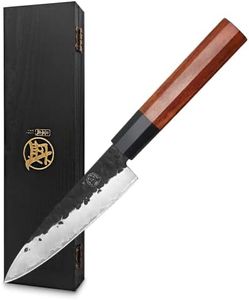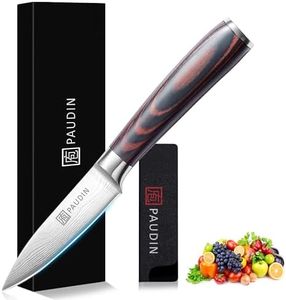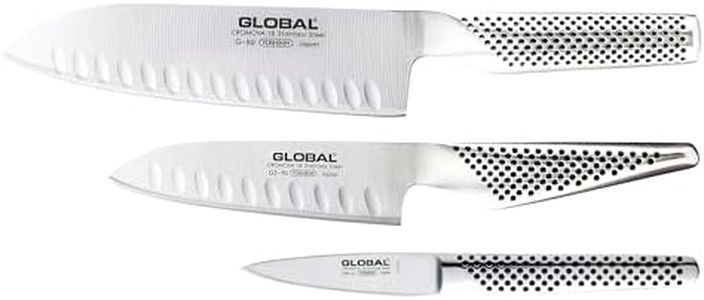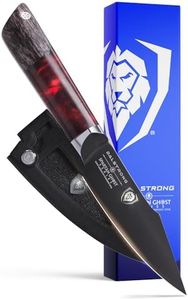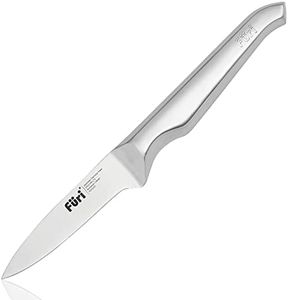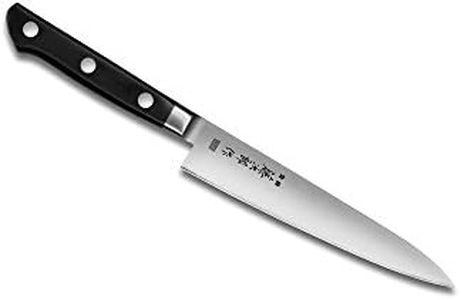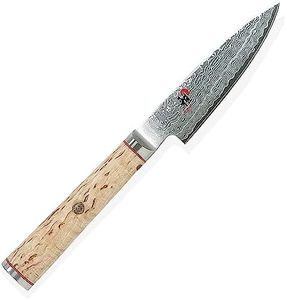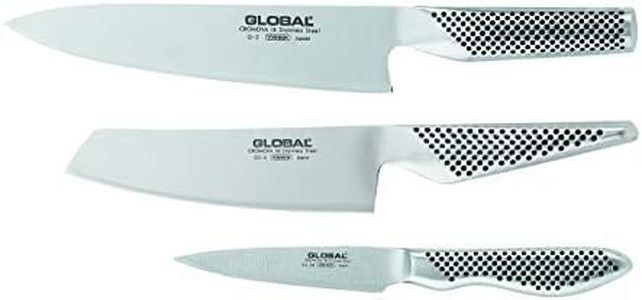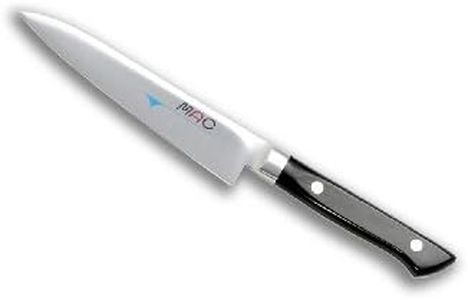We Use CookiesWe use cookies to enhance the security, performance,
functionality and for analytical and promotional activities. By continuing to browse this site you
are agreeing to our privacy policy
10 Best Paring Knives
From leading brands and best sellers available on the web.Buying Guide for the Best Paring Knives
When shopping for a paring knife, the goal is to find a tool that feels comfortable in your hand and is well-suited to your kitchen tasks. A paring knife is essential for precise work like peeling, trimming, and slicing small fruits or vegetables. Since it’s used for detail work, you want to focus on aspects like comfort, blade quality, and balance rather than just looks or price. Taking a bit of time to understand the main specs will help you confidently choose a paring knife that fits your cooking style and hand size.Blade LengthBlade length is typically measured in inches and indicates how long the cutting edge of the knife is. Most paring knives range from 2.5 to 4 inches. Shorter blades, around 2.5-3 inches, offer better control for tasks like peeling or trimming, while slightly longer blades, up to 4 inches, are suitable for slicing and working with slightly larger foods. It’s important to choose a blade length that feels easy to maneuver for the tasks you do most often.
Blade MaterialThe material of the blade affects sharpness, durability, and ease of maintenance. Common materials include stainless steel, carbon steel, and ceramic. Stainless steel resists staining and is easy to maintain, making it a popular choice for everyday use. Carbon steel is known for sharpness and ease of resharpening, but it can rust if not cared for properly. Ceramic stays sharp a long time and won’t rust, but it can be brittle. Think about how much maintenance you’re willing to do and choose a blade material that matches your habits.
Handle Comfort and MaterialThe handle is where you grip the knife, and its design and material impact comfort, grip, and control. Handles come in materials like wood, plastic, and composite. Wood offers a traditional feel but needs a bit more care with washing. Plastic and composite handles are usually more resistant to moisture and easier to clean. The shape and size should fit comfortably in your hand; if it feels too big or small, it might not give you the control you want for detailed work.
Blade ShapeBlade shape determines how the knife performs certain tasks. The classic spear point shape is slightly curved and suits most general paring tasks, while a straight-edged 'sheep’s foot' is great for chopping or julienning. A 'bird’s beak' is curved for easier peeling of round fruits and vegetables. Choose the shape based on the style of prep work you do most often in your kitchen.
Weight and BalanceWeight and balance describe how heavy the knife feels and how well the blade and handle are balanced with each other. A well-balanced paring knife won’t tip toward the blade or handle; it should feel like a natural extension of your hand. Lighter knives are easier to use for long periods without fatigue, while some people prefer a bit of heft for more control. Try holding a few different knives if possible to see which balance and weight feel most comfortable for your grip and task preferences.
